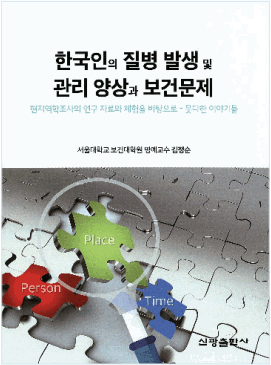Articles
- Page Path
- HOME > Epidemiol Health > Volume 39; 2017 > Article
-
Book Review
Patterns of disease occurrence and management, and public health issues among Korean populations based on information and experiences obtained by field epidemiological studies in various situations with episodic stories never been told -
Hyun-Sul Lim

-
Epidemiol Health 2017;39:e2017010.
DOI: https://doi.org/10.4178/epih.e2017010
Published online: March 16, 2017
Department of Preventive Medicine, Dongguk University College of Medicine, Gyeongju, Korea
- Correspondence: Hyun-Sul Lim Department of Preventive Medicine, Dongguk University College of Medicine, 123 Dongdae-ro, Gyeongju 38066, Korea E-mail: wisewine@dongguk.ac.kr
©2017, Korean Society of Epidemiology
This is an open-access article distributed under the terms of the Creative Commons Attribution License (http://creativecommons.org/licenses/by/4.0/), which permits unrestricted use, distribution, and reproduction in any medium, provided the original work is properly cited.
- 11,181 Views
- 189 Download

SUPPLEMENTARY MATERIAL
Figure & Data
References
Citations
Citations to this article as recorded by 


 KSE
KSE
 PubReader
PubReader ePub Link
ePub Link Cite
Cite

